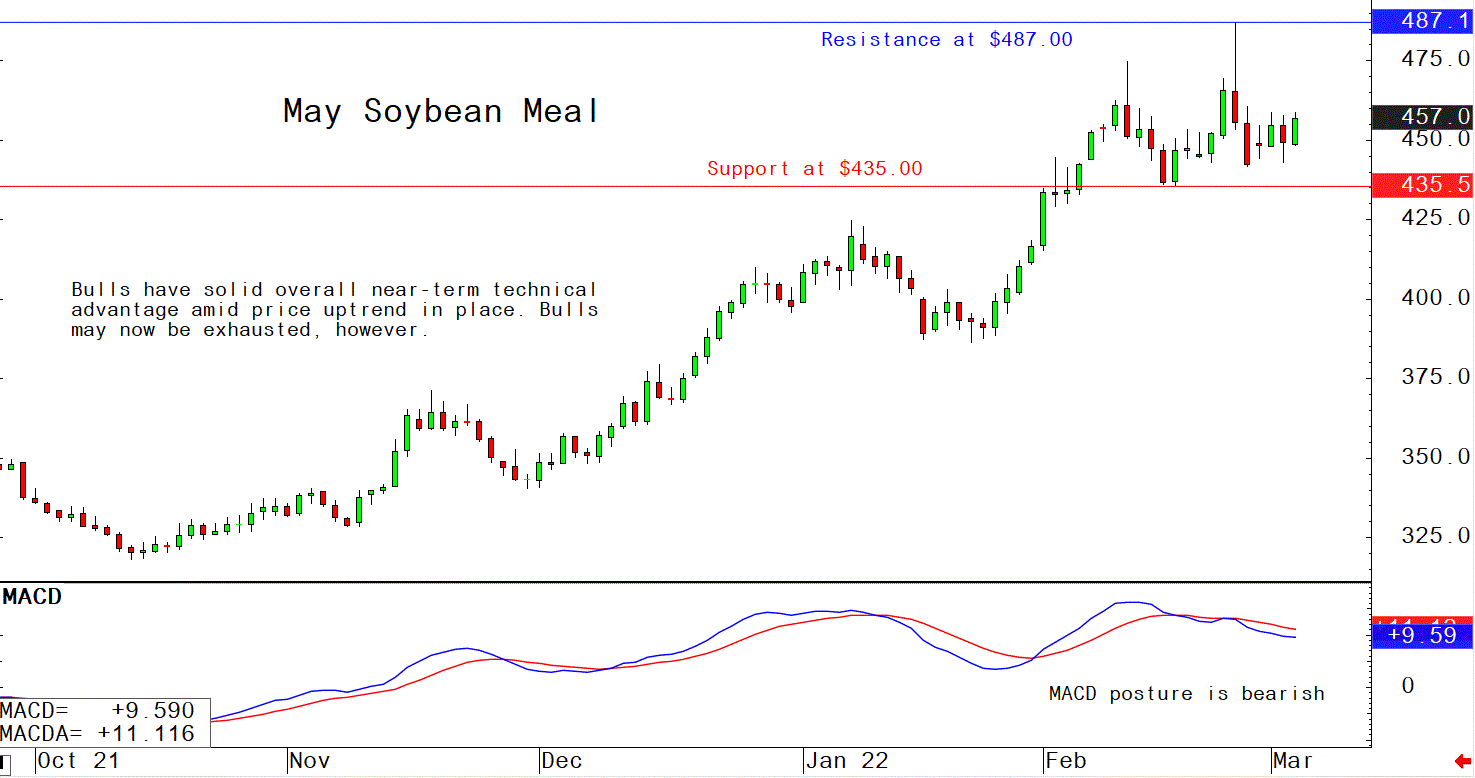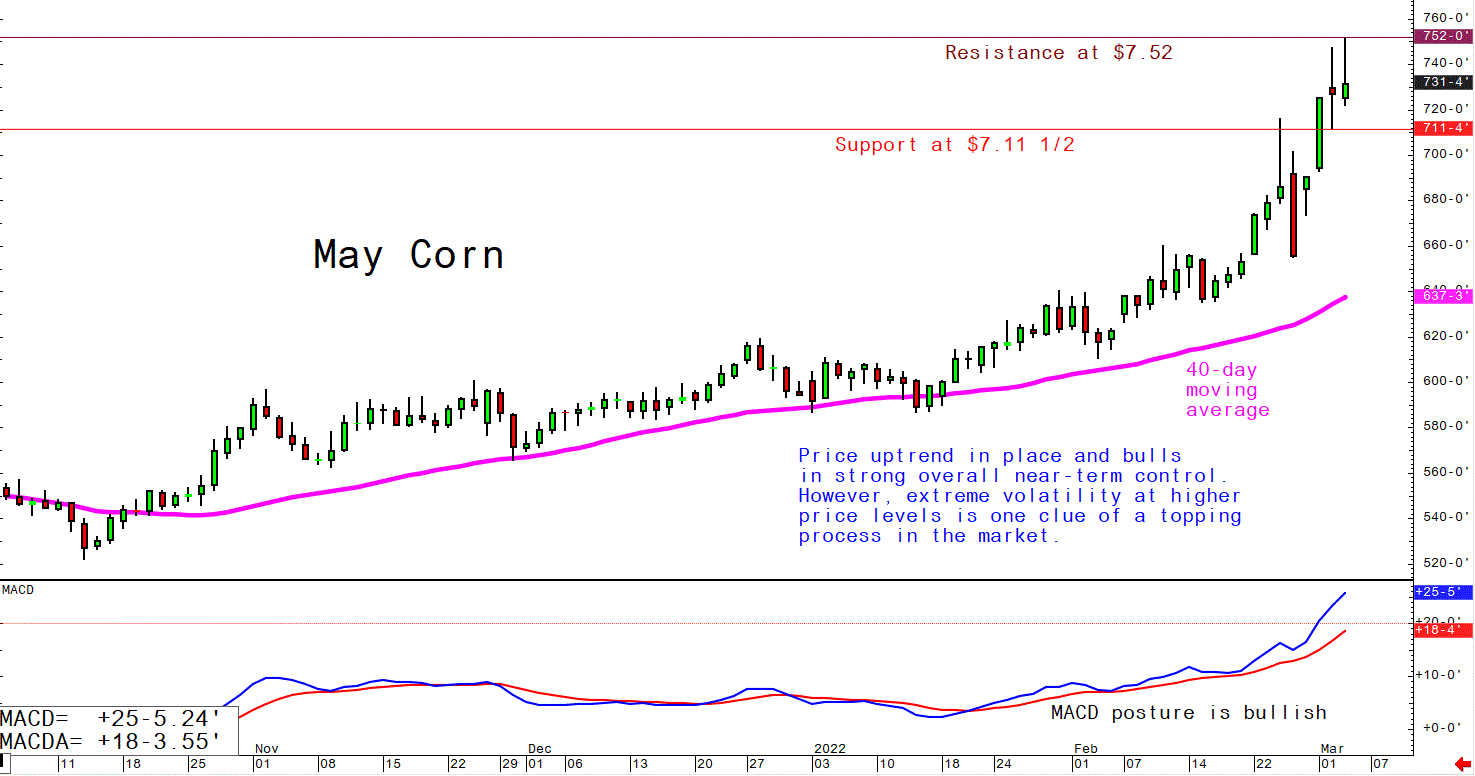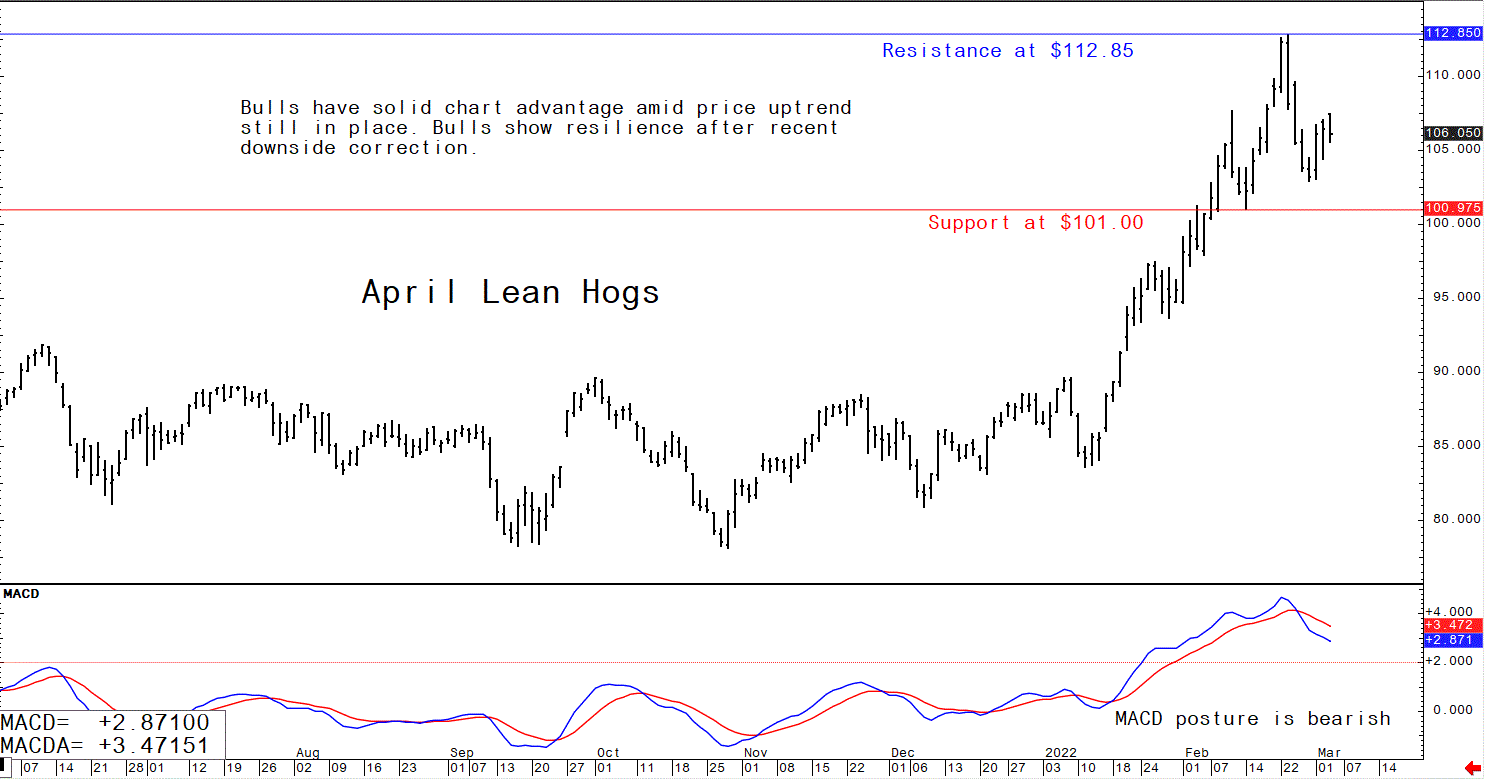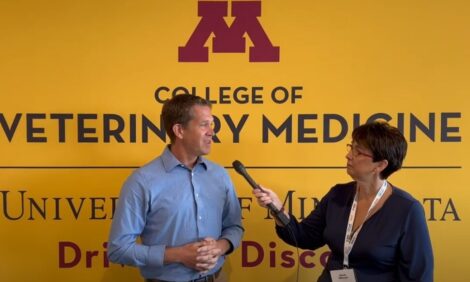



Pig outlook: Lean hog bulls show resilience
Traders expect the cash index to continue to riseThe pig traders’ perspective: Amid some choppy trading conditions, the lean hog futures market bulls are keeping alive a price uptrend on the daily bar chart. Fundamentally, April hogs finished Wednesday at a $6.46 premium to the latest CME lean hog index quote. That reflects traders’ expectations the cash index will continue to rise. Historically, it’s common for hog prices to reach an intermediate peak in mid-February, then trade mostly sideways to lower into early April. Cash fundamentals remains firm. Pork cutout value rose $3.03 at noon Wednesday to $111.22, after dropping the three previous days. US hog slaughter typically declines from early winter highs to annual lows in early summer, though it tends to flatten out in late February and edge up a bit during March. Wednesday also marked “Ash Wednesday,” so red meat demand will likely diminish over the next six weeks. Meantime, spring brings the usual surge in grilling demand for pork cuts, which should support the firmer pork prices.
Latest US Department of Agriculture (USDA) reports, and other news
U.S. pork export sales show marked improvement in latest week
USDA Thursday reported Net U.S. pork sales of 42,200 MT for 2022 were up 59 percent from the previous week and 80 percent from the prior 4-week average. Increases were primarily for Mexico (17,000 MT, including decreases of 700 MT), China (16,600 MT, including decreases of 300 MT), Japan (3,000 MT, including decreases of 200 MT), South Korea (2,400 MT, including decreases of 900 MT), and Canada (1,300 MT, including decreases of 400 MT). Exports of 30,100 MT were unchanged from the previous week, but down 3 percent from the prior 4-week average. The destinations were primarily to Mexico (12,900 MT), Japan (4,500 MT), China (4,300 MT), South Korea (2,800 MT), and Colombia (1,400 MT).
China to buy pork for state reserves
China will buy 40,000 MT of pork for state reserves this week in the first round of stockpiling this year, China Merchandise Reserve Management Center said. The National Development and Reform Commission will also guide local authorities to actively buy pork for local reserves. China is seeking to support hog prices after a sharp fall following the Lunar New Year holiday, when excess supply and flat demand weighed on the market.
China’s sow herd declines, still up from year-ago
China’s sow herd fell 0.9% during January to 42.9 million head, though that was still up 2% from last year, according to the country’s ag ministry. The country’s hog slaughter totaled 28.5 million head during January, down 1.7% from December, but up 45.9% from last year.
USDA’s 2022 food price inflation forecasts rise
USDA now expects food price inflation in 2022 to rise 2.5% to 3.5% from last year, up from its prior outlook food prices would increase 2% to 3%. The forecast for food away from home (restaurant) prices is for an increase of 4% to 5%, the second increase in as many months. Food at home (grocery store) prices are now forecast to be up 2% to 3% in 2022, up from USDA’s initial outlook that those prices would increase 1.5% to 2.5% from 2021 levels.
USDA’s Meyer does not cite concentration as factor for higher food prices
The Biden administration, including USDA Secretary Tom Vilsack, has been citing concentration in the U.S. meat industry in particular as a factor that has helped push meat prices higher for consumers. USDA Chief Economist Seth Meyer opened the USDA Outlook Forum by setting the economic stage for U.S. agriculture. In terms of food price inflation, Meyer noted food prices were up around 7%, with several factors contributing to the increase.
“The drivers of these rising prices are extremely complex, including strong domestic and foreign demand, labor challenges, short-term supply chain constraints as well as geopolitical uncertainties that are driving up the prices of energy and raw materials, directly impacting the production costs of many goods,” Meyer explained. “Additionally, weather-related agricultural production shortfalls in many parts of the world put upward pressure on commodity and food prices.”
Hog producer deadline extended
US hog producers will have an additional seven weeks, until April 15, to apply for coronavirus aid if they sold pigs for low prices on the cash market during the worst of the pandemic in 2020.
The next week’s likely high-low price trading ranges:
April lean hog futures--$102.875 to $110.00, and with a sideways-higher bias
May soybean meal futures--$435.80 to $487.00, and with a sideways bias
May corn futures--$6.80 to $7.75, and a sideways bias
Latest analytical daily charts lean hog, soybean meal and corn futures










